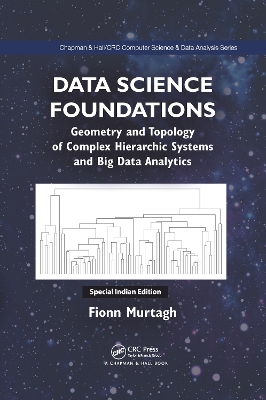Chapman & Hall/CRC Computer Science & Data Analysis
2 total works
"Data Science Foundations is most welcome and, indeed, a piece of literature that the field is very much in need of…quite different from most data analytics texts which largely ignore foundational concepts and simply present a cookbook of methods…a very useful text and I would certainly use it in my teaching."
- Mark Girolami, Warwick University
Data Science encompasses the traditional disciplines of mathematics, statistics, data analysis, machine learning, and pattern recognition. This book is designed to provide a new framework for Data Science, based on a solid foundation in mathematics and computational science. It is written in an accessible style, for readers who are engaged with the subject but not necessarily experts in all aspects. It includes a wide range of case studies from diverse fields, and seeks to inspire and motivate the reader with respect to data, associated information, and derived knowledge.
Developed by Jean-Paul Benzérci more than 30 years ago, correspondence analysis as a framework for analyzing data quickly found widespread popularity in Europe. The topicality and importance of correspondence analysis continue, and with the tremendous computing power now available and new fields of application emerging, its significance is greater than ever.
Correspondence Analysis and Data Coding with Java and R clearly demonstrates why this technique remains important and in the eyes of many, unsurpassed as an analysis framework. After presenting some historical background, the author presents a theoretical overview of the mathematics and underlying algorithms of correspondence analysis and hierarchical clustering. The focus then shifts to data coding, with a survey of the widely varied possibilities correspondence analysis offers and introduction of the Java software for correspondence analysis, clustering, and interpretation tools. A chapter of case studies follows, wherein the author explores applications to areas such as shape analysis and time-evolving data. The final chapter reviews the wealth of studies on textual content as well as textual form, carried out by Benzécri and his research lab. These discussions show the importance of correspondence analysis to artificial intelligence as well as to stylometry and other fields.
This book not only shows why correspondence analysis is important, but with a clear presentation replete with advice and guidance, also shows how to put this technique into practice. Downloadable software and data sets allow quick, hands-on exploration of innovative correspondence analysis applications.

